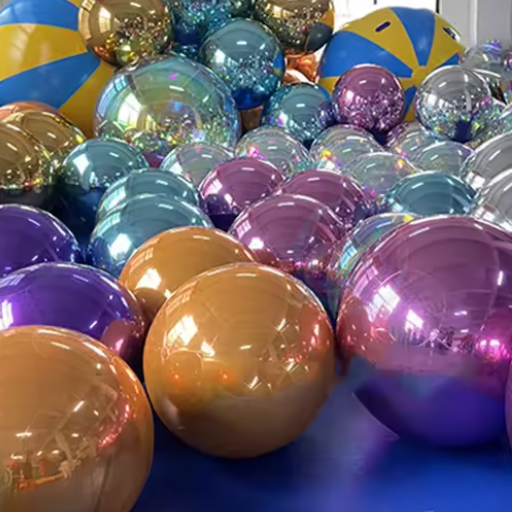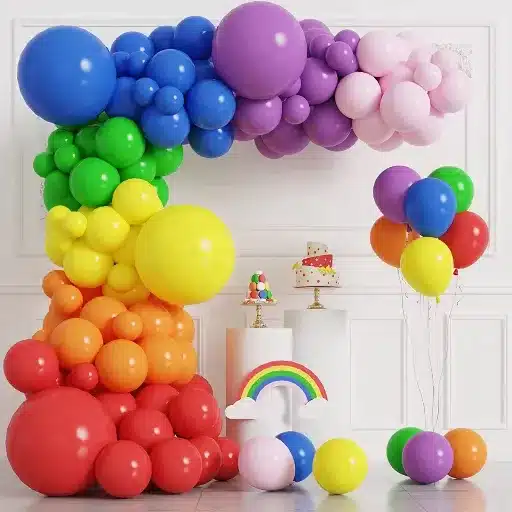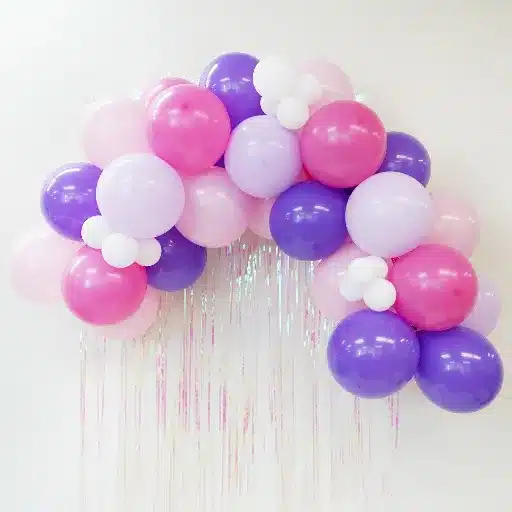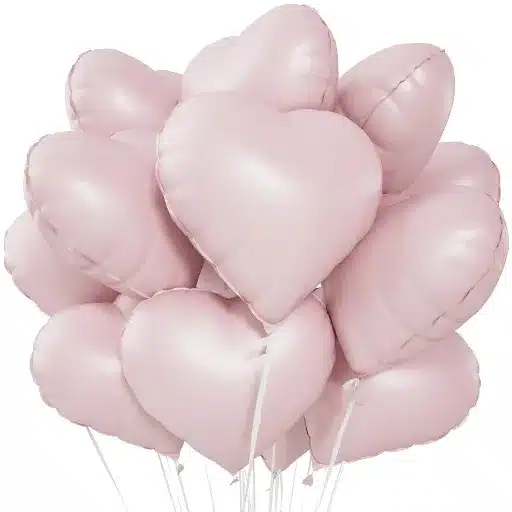Foil balloons add a touch of magic to any celebration with their bright colors and mood-lifting qualities. Deflating foil balloons is a tricky matter often overlooked, leaving anyone dazed with whatever they do to foil balloons. These balloons could be deflated for purposes such as storing them for future use, throwing them away correctly, or even saving space. Thus, the proper textbook method of deflation is crucial. This article provides a step-by-step guide on how to enhance your balloons for reuse or arrange their disposal. By the close, you’ll have a clear knowledge base to handle foil balloons without any second guesses or worries.
Understanding Foil Balloons

Foil balloons, or mylar balloons, are created from a thin, flexible layer of metallic plastic. Unlike latex, they are non-porous and retain helium or air longer. They are reusable if one carefully deflates and stores them. Because of their shiny appeal, they are limited only by the design imagination in being shaped and printed, and hence are widely used for special occasions. They need gentle handling because a sharp scratch could puncture a balloon; they must also be responsibly disposed of to minimize environmental impact.
What Are Foil Balloons?
Foil balloons are durable, shiny balloons made of a thin, flexible metalized film, popular for decorations and celebrations due to their ability to hold helium longer and be customized with varied designs.
Benefits of Using Foil Balloons
- Longer Helium Retention
Foil balloons are celebrated for their ability to trap helium longer, unlike their latex counterparts. Typically, if well taken care of, these balloons remain inflated for nearly 3 to 5 days, ideal for more celebrations or events over prolonged periods.
- Customizable Designs
Due to their strong, soft surface, foil balloons are suitable for printing intricate designs like logos and messages. This makes them perfect for personalizing events, branding opportunities, or any themed celebration.
- Shiny and Attractive Appearance
The reflection of light on the metallic finish of the foil balloon gives it great appeal and makes it stand out in any décor setup. The colors are often bright and glossy and serve as the main center of party décor.
- Durability
Foil balloons are more complex and less prone to popping than latex balloons; hence, they are suited for outings where sunlight or the blowing wind can affect traditional balloons.
- Eco-Friendly: Reusability
In contrast to single-use latex balloons, foil balloons must be deflated and stored carefully so they can be reused several times. Not only does this save money, but reusing them responsibly could also help reduce waste.
Common Uses for Foil Balloons
|
Use Case |
Description |
|---|---|
|
Celebrations & Parties |
Birthdays, weddings, anniversaries, holidays. |
|
Corporate Events |
Branding with logos and promotional designs. |
|
Gift Additions |
Paired with flowers, chocolates, or gifts. |
|
Themed Decorations |
Letters, numbers, or custom shapes. |
|
Reusability |
Reinflate for future events. |
|
Craft Projects |
Create pom-poms, tinsel, or unique artwork. |
|
DIY Party Banners |
Cut and string for personalized banners. |
|
Custom Confetti |
Punch holes for shiny confetti. |
|
Bookmarks & Tags |
Cut strips for creative bookmarks or tags. |
|
Decorative Jar Covers |
Cover jar lids for gifting or storage. |
How to Deflate a Foil Balloon
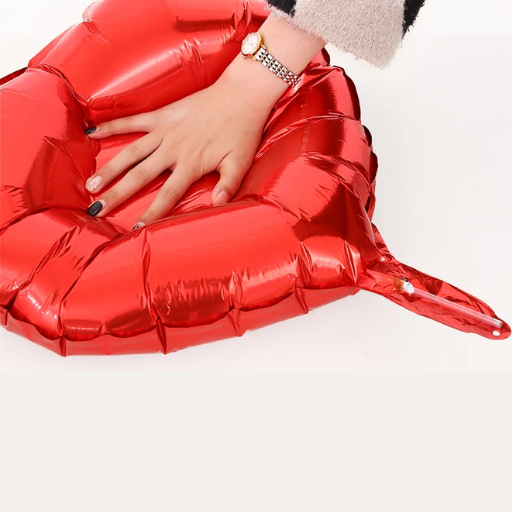
The tools and procedures for properly deflating a foil balloon are less complicated and more environmentally friendly, as the balloon can be reused. The easy steps to follow in light of this development are shown below:
Here’s how to deflate foil balloons to avoid any damage:
- Find the Inlet
It’s in every foil balloon: a small valve that doesn’t need sealing and that lets helium or air in when the balloon is pumped. This valve is pliable and almost always found around the balloon’s neck. Feel around the neck of the balloon to make out where it is.
- Get a Straw or a Deflation Device
A thin straw or a balloon deflating tool must be inserted into the valve to release the air or helium. Allow the straw to enter until the inner seal is surpassed. Such devices must be made of ergonomic materials to avoid the risk of tearing or damaging the balloon.
- Blow the Air or Helium Out As Carefully As Possible
As soon as the straw or tool has been inserted completely, press the balloon to release the air or helium gently. There is no point in bending or folding overboard, as the material is strong enough, but you might want to avoid the regions closer to the body.
- How to Fold the Balloon Flat and Store it
After deflating it completely, gently flatten the balloon. Widely fold the balloon without making hard creases and place it in a calm, dry environment. To preserve its form and quality, do not overfold or expose it to dusty, hot/ cold environments.
Additional Tips for Safe Deflation
- Reclosability
If properly deflated, the foil balloon can be reused up to 3 or 5 times, depending on its quality and the nature of the material. This brings down the cost involved and the pollution that comes with decorations to cater for parties or other similar events.
- Note on Helium
If your balloon had helium gas inside, it would be better to note this because helium is limited. Try to deflate and keep helium-inflated balloons as soon as you are done with them, as this will enhance their reusability.
- Avoid Aggressive Materials
Do not prick or tear by deflating foil balloons with sharp glass-like devices or cutting implements such as scissors or knives; otherwise, you will ruin the foil, thus making the balloon’s option for reuse deflated out of the question.
The process of deflating foil balloons efficiently, in addition to ensuring that the decorations will last longer, allows green initiatives to be in place since the number of single-use products is reduced. In fact, 30% of waste is generated from events and can be prevented by knowing how to deflate foil balloons correctly, making it one of the most favorable options for environmentally conscious event planners.
Tools You Might Need
In my personal knowledge, when considering how to deflate foil balloons, Additional Resources such as a short straw or paper tube may allow you to properly reach and insert the balloon’s nozzle for aspiration. Besides, I advise having something safe where the balloons can be securely put away without being damaged for the next time. Refrain from using sharp objects such as scissors to avoid any unintentional injury.
Common Mistakes to Avoid When Deflating
|
Mistake |
Description |
|---|---|
|
Skipping the valve |
Not using the valve damages the balloon. |
|
Forcing deflation |
Squeezing without a straw risks tearing. |
|
Using sharp objects |
Can puncture and ruin the balloon. |
|
Over-pressing |
Excessive pressure can cause creases. |
|
Improper storage |
Folding too tightly leads to damage. |
|
Ignoring damage |
Small tears worsen during reuse. |
|
Rushing the process |
Hurrying increases the risk of mistakes. |
Storage Tips for Deflated Balloons

If you need to store the balloon when it is already deflated, take out all of the air first by pushing and rolling out any excess air that might be present in the balloon after it is deflated. Once the balloons are entirely flat, it is necessary to fold them in such a way as to avoid any creases and wear them out. Balloons can also be tucked inside a sealed container made out of plastic or airtight bags that will prevent dust, water, and sunlight from accessing the Material, which is untented. One must also keep them in a cool place away from moisture to ensure they stay as long as possible.
Best Practices for Storing Foil Balloons
|
Practice |
Description |
|---|---|
|
Store in cool, dry place |
Avoid heat, sunlight, and humidity. |
|
Keep balloons flat |
Prevent wrinkles and maintain shape. |
|
Use labeled storage bins |
Organize by size, shape, or occasion. |
|
Avoid sharp objects |
Protect from punctures or tears. |
|
Rotate stock regularly |
Use older balloons first to avoid aging. |
|
Use airtight containers |
Protect uninflated balloons from oxidation. |
|
Hang on pegboards |
Display packaged balloons for easy access. |
|
Separate by category |
Sort by theme, holiday, or design. |
How to Store for Future Celebrations
Proper management of slender film balloons minimizes cost and mess, as they can be recycled for more than one function. The following easy instructions will help maintain the desired state of balloons for an extended period.
- Make Sure an Object is No Longer Inflated
Balloons come with a straw or a tool for specific use to help remove air from every unit appreciably. All trapped air must be squeezed or pushed out entirely so the foil sheets do not have lumps. They get fatigued and tear easily whenever extra stress is put on the balloons.
- Always Shelve Clean Balloons
To keep these balloons dirt-free, dusty, or on such a surface, a careful wipe with a wet, soft cloth should be done without scrubbing them. When wet, ensure they are not stored immediately, since this may cause mold or even water damage.
- Incorporate Gentle Folding
The balloons should be deflated and folded back neatly along the seam areas or packed into a small package. The folding should not be harsh, and there should be no sharp creasing of the bins, as this will affect the anatomical structure.
- Take Moisture-Proof Cases
The folded helium balloons should be packed tightly into resealable plastic bags or other vacuum-coated bags that preferably protect against dust, moisture, or light. After placing all the balloons in the container, they should be marked—for instance, with the type of balloon inside.
- Positioning of the Balloons
Keep the foldable balloons stored in a cool, dry place. None should be exposed to the sun or heat. As much as possible, do not leave the balloons in damp basements or in temperatures that vary, as this can ruin the material.
In conclusion, when you know how to deflate foil balloons, these procedures keep them usable and affordable for even more parties in the future.
Creative Ways to Reuse Foil Balloons
Foil balloons are not merely celebratory; they can be put to several other innovative uses as well. One way to be eco-friendly is to stop treating them as garbage and instead tinker with their uses and applications. Below are ways to repurpose some finished foil balloons due to changing lifestyles and new developments.
- Gift Packaging and Enhancement
Flatten all the foil balloons and use them as decorative paper for wrapping to help small gifts. Such materials are bright enough to wrap gifts even without any additional decorations. This type of “green” gift wrapping, as entitled by Google search, has widened its thematic focus for several years.
- Balloon Decoratives
Remove air from the old balloons and cut out symbols such as stars, hearts, or letters. Then, stitch and form banners or chains of balloons. This particular method of reuse became popular after some influencers’ presentations on their “how-to” videos emphasizing the creativity and consciousness of decoration.
- Homemade Party Props
Therefore it is possible it’s possible to transform a conventional r decoration of balloons into a funny or striking artistic element for the party or the photo session in the future. There is a robust DIY party decor market, as shown by the 20% surge in ‘cheap party decoration ideas’ keyword searches.
- Cosmetic Bags or Pouches
By sewing, conflate pensile foil balls to pouches or mini bags. Easy to carry, colored bags with neat organizational capabilities are appropriate for putting in toiletries, craft materials, or eatables. Crafting pouch tutorial content is increasingly welcomed as social media platforms such as tiktok pack tens of millions of views.
- In an Emergency Situation
Throw those foil balloons over the plants in the garden overnight instead of the regular mulch blanket you would use, or perhaps use them underground when camping. This kind of content ‘survival skills’ is in demand because techniques involving foil such as these have been increasing by 15% yearly.
- Children’s Activations and Enrichment Activities
Let the children explore how to deflate foil balloons and make some fun and exciting activities. In the world of kids’ crafts, extra-large balloons are used for making costumes, mosaics, or even scientific experiments. Increasing traffic has been observed on educational DIY resources, especially for parents and teachers searching for cost-effective projects.
Attempting to stem waste by reusing foil balloons helps change consumption behaviour. These are the most effective and practical methods of translating the value of foil balloons and contributing to sustainable development. Suggestions that demolished the party wall.
Sustainability and Foil Balloons
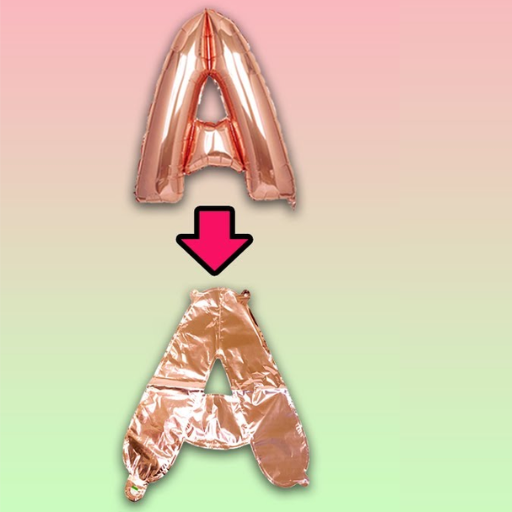
It is possible and correct to say that even the use of foil balloons can be sustained. One way to do this is to deflate foil balloons and reuse them for other creative arts, or better still, recycle the collapsed balloons to help save the environment. Besides, coming up with innovative ways of celebrating will also enhance green culture because it allows responsible consumption during happy days.
The Environmental Impact of Balloon Disposal
| Impact Area | Description |
|---|---|
|
Marine Pollution |
Balloons end up in oceans, harming wildlife. |
|
Wildlife Hazards |
Animals ingest balloons, causing blockages. |
|
Entanglement Risks |
Ribbons trap animals, restricting their movement. |
|
Non-Biodegradable Waste |
Balloons take years to decompose. |
|
Helium Waste |
Depletes a non-renewable resource. |
|
Power Hazards |
Mylar balloons cause power outages and fires. |
|
Deforestation |
Latex production leads to habitat loss. |
|
Chemical Pollution |
Balloon production releases toxic chemicals. |
How Deflating Balloons Contributes to Sustainability
Most individuals overlook solutions such as deflating balloons after use; however, this is a negative step towards environmental goals. Fortunately, an individual, particularly an event organizer, seeks to deflate foil balloons correctly. In other words, reducing environmental impact and taking steps for additional practices, such as reuse, is particularly helpful.
Here are five more specific implications of deflating balloons towards eco-friendliness.
- Enables Reuse
The deflated balloons can be stowed away for future engagements instead of being trashed, which helps prevent the purchase of new ones and preserve resources. Sustainability research suggests that material usage efficiency of about 25% can be achieved through reuse.
- Helps Avoid Animal Attacks
Most often, when overinflated or very deflated balloons are left carelessly, they make their way into environmentally sensitive areas where animals exhibit consumption and entanglement of the material.
- Comes in Handy with Effective Recycling
If deflated, Mylar and other foil balloons can successfully get into secured recycling boxes or containers. Flattening them out saves on the ease of putting them together with other wastes, just as tough as positioning a bone-dust animal in a recycling bin where bones are placed.
- The Use of Space in Landfills is Limited
Landfills are filled with piles of inflated balloons, which are all meant to be disposed of. However, prior to getting rid of the balloons, deflation reduces the volume of space usable in the landfill.
- Encourages Reduction of Pollutants
Every deflated balloon reused means there’s less pressure to produce a new one, reducing pollution from transportation and production. Reusable bags as a substitute for plastic ones is an interactive technique which, according to research, can save up to 30% of the CO₂ emissions.
It is better to satisfy one’s thirst for fun within certain limits of resource sufficiency and sustainable development without burdening the environment, even with such a small practice as balloon deflation.
Eco-Friendly Alternatives to Traditional Balloons
Eco-friendly festive accessories such as biodegradable latex balloons, fabric decorations that can be used multiple times, paper streamers, or metallic bunting can be used for celebrations instead of traditional balloons, which otherwise welcome a great deal of festivity.
References
-
Designing the shape of a large scientific balloon
Published on ScienceDirect, this article discusses the principles and models related to balloon design and behavior.
Link to source -
What is the shape of a Mylar balloon?
This paper, published on Taylor & Francis Online, explores the physical properties and shapes of Mylar balloons, including their deflated state.
Link to source -
Ballooning across the curriculum
This resource on Huskie Commons includes practical insights into balloon handling, including deflation techniques.
Link to source
Frequently Asked Questions (FAQ)
How can I deflate the balloon for future celebrations?
To deflate the balloon for future celebrations, gently press on the sides to release the air inside. If it has a valve, consider using a straw to push through the opening and allow the air to escape slowly without damaging the balloon.
What tools do I need to deflate and store your foil balloons?
You will need to insert a drinking straw or a balloon deflation nozzle into the balloon’s valve. These tools help you release the air inside without causing leaks or damaging the balloon.
Can I easily deflate Mylar balloons without losing them?
Yes, Mylar balloons can be easily deflated by inserting a straw into the opening or valve. This method lets you refill or reuse the balloon later for parties or other decorations.
How do I properly squeeze the balloon to release air inside?
To squeeze the balloon effectively, gently apply pressure around the base while ensuring the straw is inserted into the valve. This will help release the air inside without causing any damage.
Is there a method to deflate latex balloons for future use?
To deflate latex balloons, you can insert a straw into the opening and gently press to release the air. This method allows you to fold and store the balloons for future celebrations without causing tears.
What should I do if my foil balloons are self-sealing?
If your foil balloons are self-sealing, deflate them by carefully inserting a straw into the valve. Push the straw far enough to ensure proper air release without damaging the balloon.
How can I store foil balloons to ensure they last for future events?
To store foil balloons for future events, make sure they are fully deflated and carefully fold them. Keep them dry away from direct sunlight to prevent deterioration and prolong their life.
What are the best practices for deflating and reusing foil balloons?
The best practices for deflating and reusing foil balloons include gently inserting a straw into the valve, slowly releasing air, and folding the balloon carefully. This method reduces waste and allows you to reuse the balloons for future celebrations.

